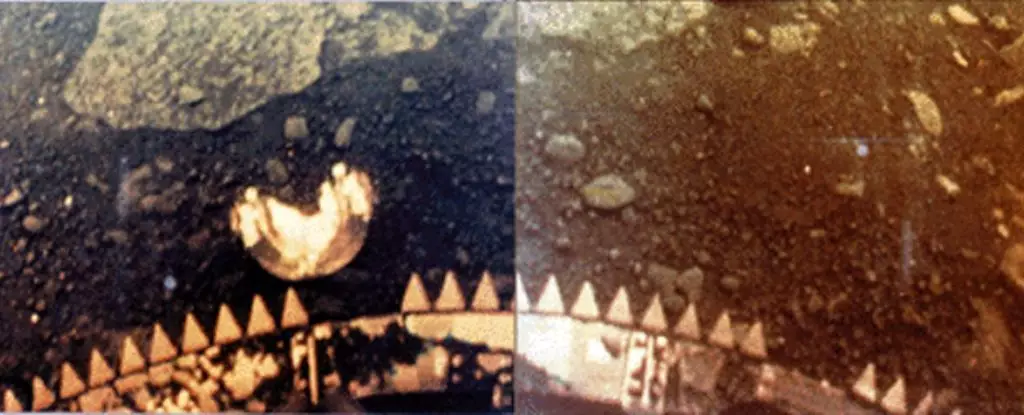Venus, so tantalizingly similar to Earth in size, composition, and density, yet incomprehensibly different in terms of habitability. Veiled in a dense, toxic shroud of acidic clouds, the surface of Venus is hostile, even to life itself. With a staggering average surface temperature of 464 degrees Celsius (867 degrees Fahrenheit) and atmospheric pressure nearly 100 times that of Earth’s, Venus remains a formidable challenge for scientists to explore. Despite these challenges, the Soviet Venera program managed to collect valuable data from the Venusian surface between 1961 and 1984, providing us with unprecedented insights into this enigmatic planet.
The Venera program, comprising 16 probes, was a monumental achievement for the Soviet space program. It successfully penetrated the atmosphere of another planet, with Venera 3 becoming the first probe to do so in 1966. A significant milestone was reached in 1970 when Venera 7 made a soft landing on Venus, marking the first-ever landing on another planet. Although none of the eight probes that reached the surface lasted more than two hours due to the extreme conditions, Venera paved the way for the transmission of images and sounds from another celestial body.
Astonishingly, Venera remains the only program to date that has captured images and audio from the surface of Venus. Probes such as Venera 13 and 14 recorded sound, while Venera 9, 10, 13, and 14 captured panoramic images of their landing sites. Despite the grainy quality of the data by today’s standards, it is a testament to the tremendous challenges faced by these probes operating under incredibly stressful conditions. Recent advancements in image processing have allowed for a reinterpretation of the nearly 50-year-old data, resulting in intriguing and captivating pictures of Venus. These images depict a foreign, golden-hued world, emanating an aura of forbidding mystique, despite not revealing the scorching temperatures, crushing pressures, and toxic environment that would render life impossible.
The subtle golden hue of Venus is an awe-inspiring consequence of sunlight filtering through its thick cloud cover, casting a unique tint on its surface. Utilizing advanced image processing techniques, researchers at Brown University have determined that the rocks and dirt on the Venusian surface possess a dark grayish hue. This distinctive coloration can be attributed to the planet’s volcanic history, with Venus’s surface dominated by volcanic features. In fact, there is evidence to suggest that Venus might still harbor volcanic activity. The dark rock is believed to be basaltic in nature, providing invaluable insights into the geological processes shaping this mysterious world.
The similarities between Venus and Earth serve as a compelling motivation for scientists to delve deeper into the study of Venus. By comprehending the ways in which a planet’s evolutionary path can deviate, we gain crucial knowledge about the conditions that either foster or hinder the existence of life. This understanding becomes pivotal in our search for life beyond our home planet, enabling us to explore the Milky Way galaxy with renewed curiosity and address humanity’s most profound questions about our origins and purpose.
Despite the significant advancements in technology since the Venera era, we have yet to send another probe to Venus. However, multiple upcoming missions from global space agencies are dedicated to studying the planet’s atmosphere, offering hope for further discoveries. Among these missions, Roscosmos, the Russian space agency, stands out as the only agency with concrete plans to send a lander to the Venusian surface. Until then, we find ourselves in a state of Venusian limbo, fixated on decades-old images and tantalizingly wondering about the secrets concealed within this alien landscape.
Venus, Earth’s perplexing twin, captivates us with its stark contrasts and unyielding hostility. The Venera program remains a remarkable testament to humanity’s indomitable spirit of exploration, overcoming unimaginable challenges to capture invaluable data from a world beyond our reach. As we continue to unravel the mysteries of Venus, we inch closer to comprehending the intricate tapestry of planetary evolution and the delicate balance necessary for life to emerge. With future missions on the horizon, we yearn for the day when we can shed more light on the secrets hidden within the depths of this harsh yet captivating planet.


Leave a Reply